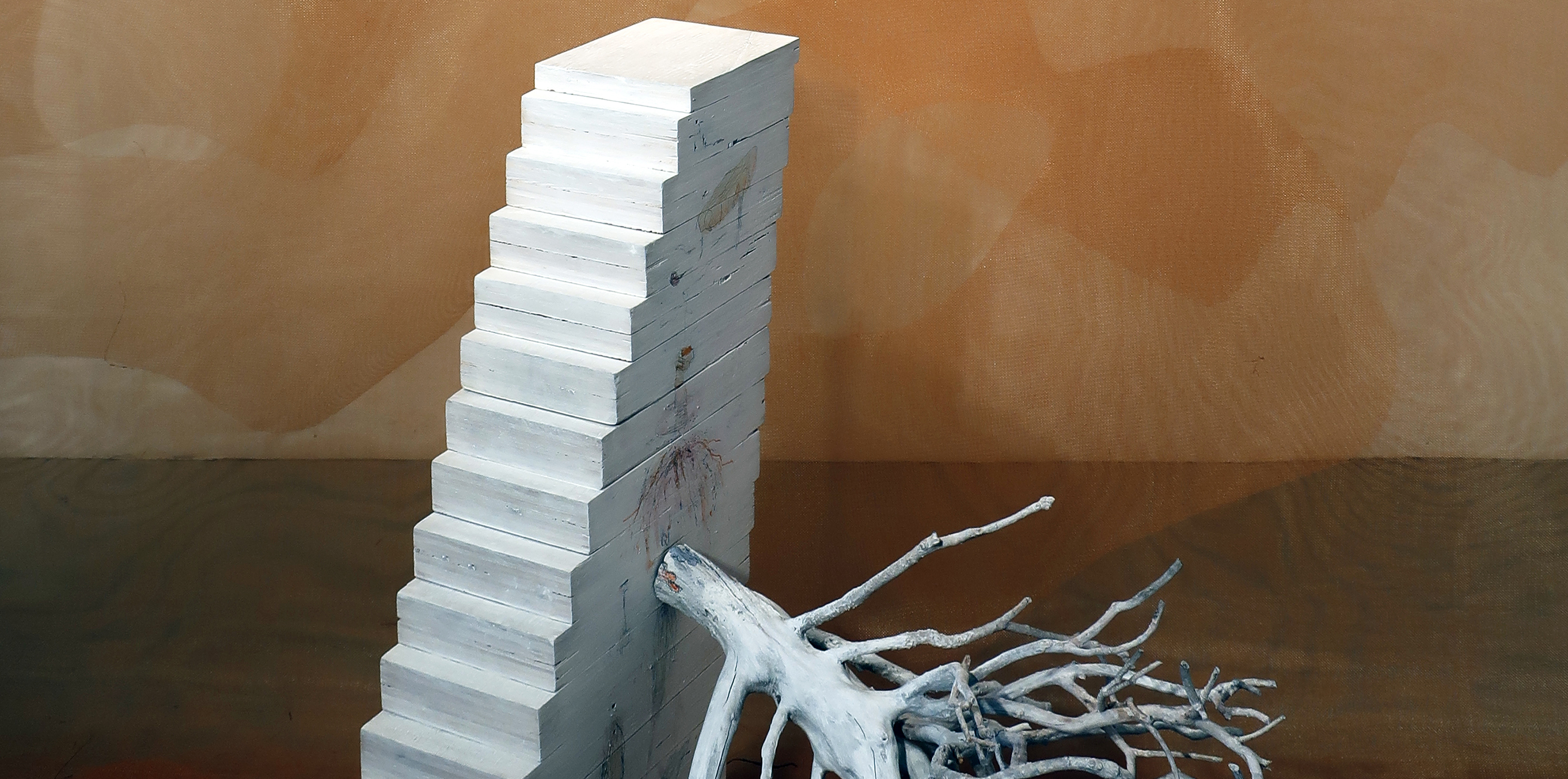
Wandering in the Shades of Night
Shirley Wiebe
ABOUT THE EXHIBITION
During a journey to the site of a ruined ancestral Mennonite village in Ukraine, flooded by damming of the Dnieper River, I found only an uncanny staircase deposited on the riverbank. The form of this eerie architectural feature—disconnected from its initial location and function—performs as a memory surrogate for obliteration and flight from persecution.
My process is based on studied physical interaction with materials in unfamiliar combinations. The recurring form of a staircase embodying concepts of passage, challenge, and destination intermingles with other works in a state of perpetual motion, untangling and tangling. This is my way of dismantling the past to manifest the present.
I was raised Mennonite on a Saskatchewan farm outside of the city. A childhood task involved rinsing entrails during butchering. The delicate membrane was slippery soft and silky in my fingers. I recall taking great care not to damage it. Seemingly grotesque, to me it was fascinating and beautiful. Ground pork was stuffed into these casings and smoked (farmer sausage), transferring animal flesh inside its own intestines. The feature piece Ghost of the Farm is an installation that pays homage to the allegory of corporeal digestion and cognitive assimilation. Are holding on and letting go oppositional terms, or can they be understood generatively?
I came across a Mennonite hymn my mother used to sing, “I Wandered in the Shades of Night,” and chose it as my title. The exhibition considers how a background of faith and perseverance through persecution and resettlement shapes human destiny.
